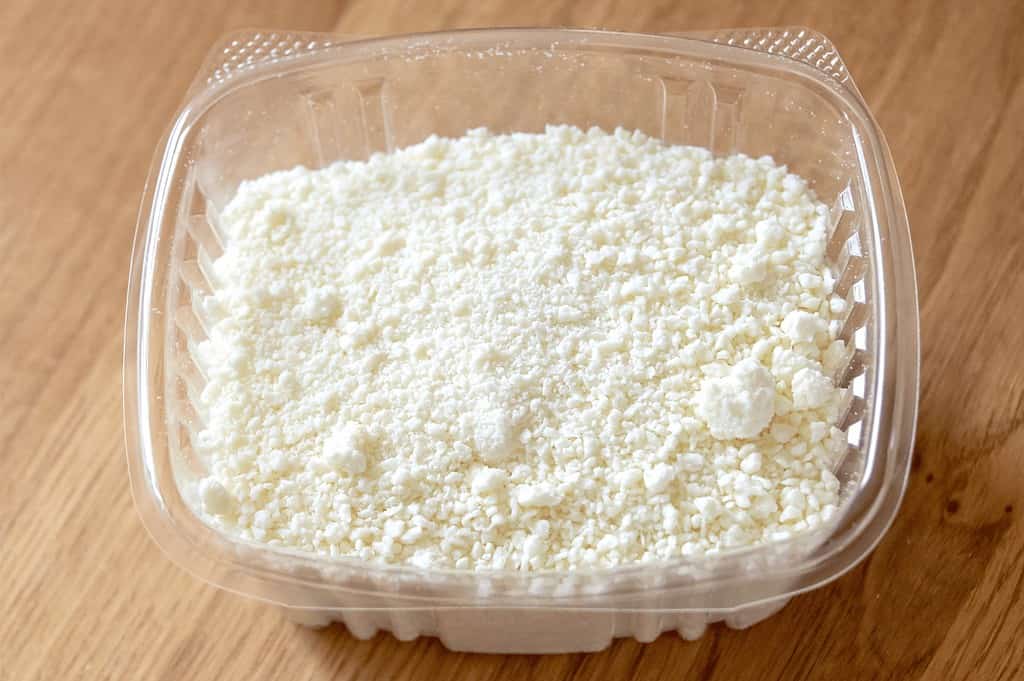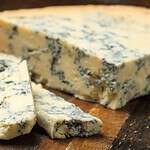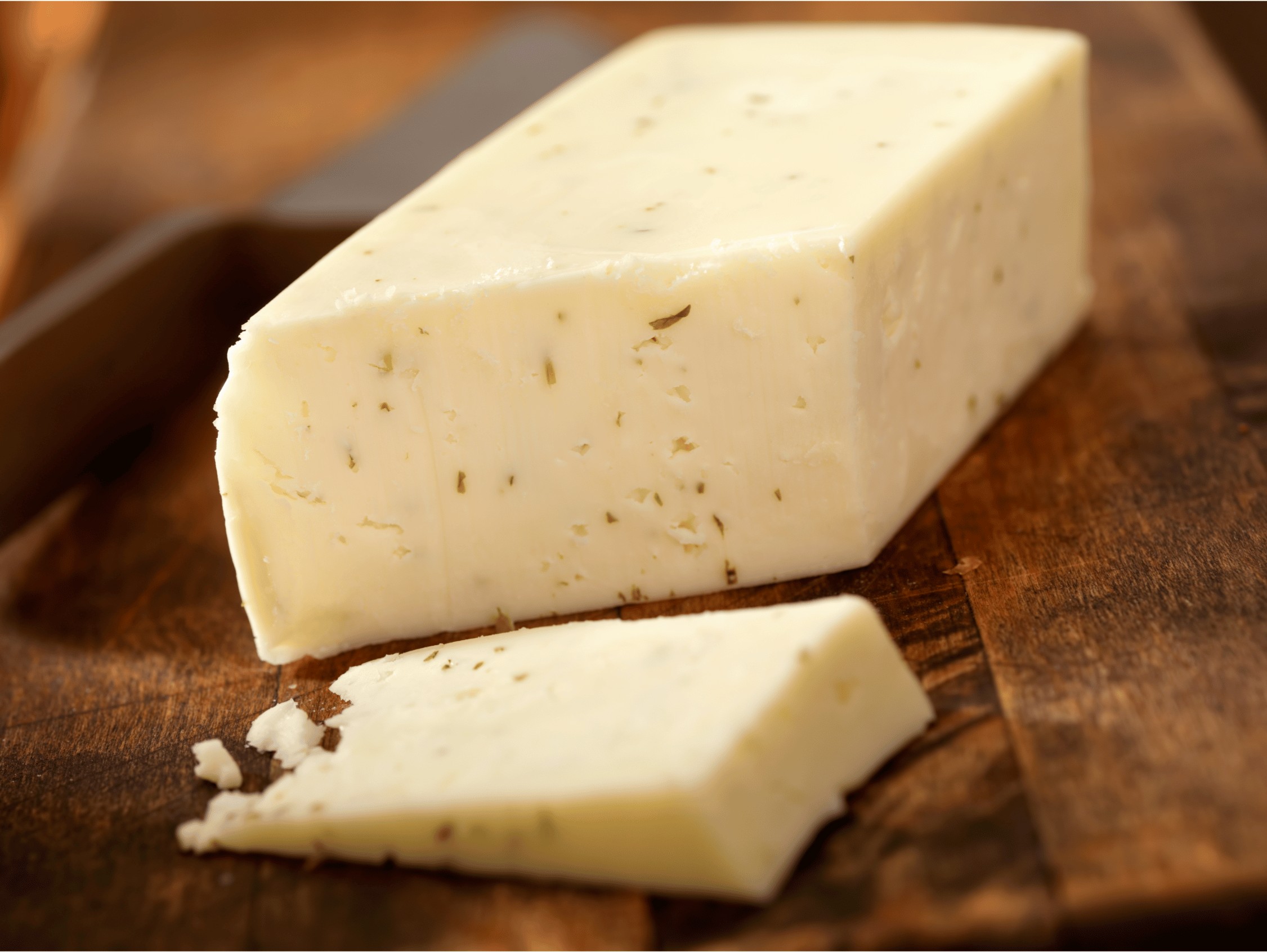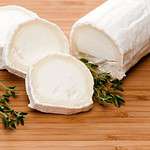Cotija cheese is a type of Mexican cheese that offers a unique flavor profile to culinary enthusiasts and home cooks alike. Originating from the town of Cotija in the Mexican state of Michoacán, this cheese has a rich history and has become an essential component of Mexican gastronomy. Typically made from cow’s milk, Cotija cheese is known for its strong, salty flavor and crumbly texture, which can vary from fresh to aged.

As Cotija cheese matures, it develops a harder texture similar to that of Parmesan or aged Romano, making it versatile for both grating over dishes and incorporating into recipes. Its robust taste ensures it plays a pivotal role in enhancing the flavors of traditional Mexican dishes like elotes, tacos, and refried beans. The aging process of Cotija can range from a few weeks to several months, further diversifying its uses in the kitchen.
Key Takeaways
- Cotija cheese is a traditional Mexican cheese with a distinct salty taste.
- Its textural range from crumbly to hard allows it to be used in a variety of dishes.
- Proper storage is crucial for maintaining the cheese’s quality and shelf life.
History and Origin
Cotija cheese is an integral part of Mexican cuisine, with a rich heritage originating from the town of Cotija in the state of Michoacán, Mexico. It has been produced there for hundreds of years and is named after its place of origin.
Town of Cotija
Cotija is a small town located in the mountains of Michoacán. The cheese that bears its name is thought to date back to the 16th century, produced by local farmers. The traditional method of making Cotija cheese involves aging it for several months, which gives it the distinctive salty flavor.
Michoacán
The state of Michoacán, known for its diverse agricultural production, is where the town of Cotija lies. This region’s climatic conditions are ideal for the production of the cheese, with the altitude contributing to its unique drying and aging process. Cotija cheese, a key component of Michoacán’s gastronomy, has become a symbol of the region’s culinary heritage and is often used to enhance the flavor of various Mexican dishes.
Characteristics of Cotija Cheese

Cotija cheese, an aged Mexican variety, is renowned for its unique qualities that set it apart from other cheeses. We’ll explore its texture, flavor, color, and aging process to understand why it’s a sought-after ingredient for adding a bold touch to various dishes.
Texture
Cotija cheese comes in two main textures: fresh and aged. Fresh Cotija has a moist and soft texture while the aged version becomes hard and crumbly. As it ages, the moisture content reduces, yielding a cheese that easily crumbles – ideal for sprinkling over foods.
Flavor
The flavor of Cotija cheese is rightfully described as salty and tangy. It possesses a mild, somewhat nutty flavor when it is young but develops a stronger, sharper tang as it matures. This tangy flavor intensifies with the aging process, adding a robust taste to dishes.
Color
In terms of color, Cotija transitions from white to a pale yellow as it ages. The younger cheese will typically be whiter, while the aged version assumes a more pronounced yellow hue, indicative of its prolonged curing time.
Aging Process
We classify Cotija cheese as either fresh (queso fresco) or aged (queso añejo). The aging process is crucial in developing its dry, crumbly texture and intensifying its flavors. Fresh Cotija is aged for a very short period, whereas aged Cotija may be matured for several months to over two years, enhancing its salty, tangy characteristics.
Culinary Uses
Cotija cheese is an essential ingredient in various Mexican dishes, providing a salty flavor that enhances a multitude of recipes. Whether used as a garnish or a key component, our examination of its culinary uses spans from traditional to modern cuisine.
Traditional Mexican Dishes
In the realm of traditional Mexican cuisine, Cotija cheese is often grated or crumbled atop some of our most cherished preparations. To list a few:
- Tacos: We often sprinkle Cotija on both meat and vegetarian options for an added salty kick.
- Enchiladas: The cheese is used within the filling or garnished over the top, contributing to the depth of flavor.
- Mexican Street Corn (Elote): Here, Cotija is liberally heaped on the grilled corn on the cob, complemented by chili powder, lime, and creamy sauce.
- Beans: A sprinkle of crumbled cheese transitions plain cooked beans into a savory side dish.
- Chilaquiles: For this breakfast favorite, Cotija adds a finishing touch that contrasts with the saucy, softened tortillas.
Modern Applications
In more contemporary settings, Cotija cheese lends itself to innovation within numerous dishes:
- Salads: We introduce a touch of umami to our salads by including Cotija, pairing excellently with vinaigrettes and robust greens.
- Soups: A modest sprinkle of Cotija on soups can transform the taste profile substantially.
- Nachos: When used in nachos, the cheese provides a distinct flavor that stands out even amidst a variety of bold toppings.
Topping and Garnishing
Beyond these specific dishes, Cotija cheese is a versatile ingredient that serves as an excellent topping and garnish, contributing not just to Mexican recipes but crossing culinary borders:
- Tostadas: We crown tostadas with Cotija to balance the textures and the flavors of the base ingredients.
- Corn on the Cob: In a nod to elote, simple buttered corn on the cob is elevated when Cotija is added.
- Salad and Recipes: Any recipe or salad calling for a salty, crumbly cheese becomes an opportunity to use Cotija.
Through its diverse applications, Cotija cheese remains a staple that we continue to apply in multiple facets of cooking.
Production and Varieties

We will now explore the distinct production methods and the varieties of Cotija cheese, each offering unique flavors and textures.
Añejo vs. Fresh
Cotija cheese can be categorized based on its aging process: Añejo (aged) and Fresh (unaged). Añejo is known for its firm texture and strong, salty flavor developed over several months, making it similar to Pecorino Romano. On the other hand, Fresh Cotija cheese is softer and less intense, akin to Queso Fresco or Feta cheese.
Artisanal Techniques
We focus on the traditional methods used by producers, who rely heavily on the quality of cow’s milk. Artisanal Cotija is characteristic of small-scale production where attention to detail is paramount. The cheese is handmade and salted before being left to age, resulting in a product that might be compared to fine artisan cheeses like Romano or Ricotta Salata.
Commercial Varieties
Commercial Cotija cheese is produced on a larger scale, with standardized processes to ensure consistency. Despite less variation, the commercial types still range from fresh cheese to añejo, and maintain a flavor profile that stands well alongside other cheeses like Pecorino Romano and goat cheese. Here, the emphasis is on broad availability and uniformity rather than the nuanced differences found in artisanal batches.
Nutritional Information

When we examine Cotija cheese from a nutritional standpoint, we find that it’s a source of various important nutrients. Cotija cheese is notable for its protein content, which is essential for building and repairing tissues in our body. Per one-ounce serving, it typically provides about 7 grams of protein.
In terms of minerals, Cotija cheese is an excellent source of calcium, contributing to our daily requirements for strong bones and teeth. This serving size usually contains around 200 milligrams of calcium.
We also find potassium in smaller quantities in Cotija cheese. Potassium is crucial for maintaining proper heart function and muscle contractions. A one-ounce serving contains approximately 25 milligrams of potassium.
Furthermore, while not a significant source of vitamins, Cotija cheese does offer small amounts of Vitamin A, which is vital for good vision, the immune system, and reproduction.
Below is a summary table of the typical nutritional content in a one-ounce (28 grams) serving of Cotija cheese:
| Nutrient | Amount |
|---|---|
| Calories | 100 |
| Protein | 7g |
| Fat | 8g |
| Saturated Fat | 5g |
| Cholesterol | 25mg |
| Sodium | 330mg |
| Calcium | 200mg |
| Potassium | 25mg |
| Vitamin A | Varies* |
*The amount of Vitamin A varies in Cotija cheese depending on how it is made and aged.
We should be mindful of the sodium content in Cotija cheese since it is quite high, and overconsumption can lead to health issues. Its high saturated fat content also suggests moderation is key when incorporating it into our diet.
Purchasing and Storage

When we look for Cotija cheese, it’s important to consider both where to buy it and how to store it properly to maintain its quality and flavor.
Where to Buy
Hispanic Specialty Grocers: We can typically find Cotija cheese at Hispanic specialty stores, where they offer a variety of authentic artisan cheeses.
Supermarkets: It’s also available in the cheese section of many large supermarkets.
Online Retailers: For convenience, we can purchase Cotija cheese from online retailers, which may offer a broader selection, including pre-grated options.
Storage Tips
Whole vs. Pre-Grated: We recommend buying Cotija cheese in its whole form rather than pre-grated, as the flavor is more robust, and it lasts longer.
Refrigerator Storage:
- Airtight Container: We should store Cotija cheese in an airtight container.
- Refrigerator Shelf Life: Properly stored, it can last between two to three weeks in the refrigerator.
Freezing:
- While freezing is not recommended for optimal taste, it is possible to freeze Cotija cheese if necessary. Freeze it in small portions, wrapped tightly in plastic and placed in an airtight container.
Substitutes and Alternatives
When a recipe calls for Cotija cheese and it’s not available, we can opt for substitutes that mimic its salty and crumbly texture. Through familiar alternatives, we find ways to mirror the characteristics of Cotija cheese in both taste and function.
Similar Cheeses
- Parmesan Cheese: Aged with a hard texture, Parmesan is a solid substitute, offering a robust flavor suitable for grating over dishes. However, keep in mind that Parmesan can be stronger in flavor.
- Pecorino Romano: This sheep’s milk cheese delivers a sharper tang, and its dry texture makes for an excellent Cotija stand-in for grating purposes.
- Ricotta Salata: A salted and aged variant of ricotta, which while not as strong, provides a milder option for crumbling over salads and pastas.
Dairy and Non-Dairy Alternatives
- Feta Cheese: While traditionally made from sheep’s milk or a mix including cow’s milk, feta presents a softer yet still crumbly option with a tangy taste.
- Romano Cheese: Often made from cow’s milk, Romano is another hard cheese that carries a piquant salty flavor suitable for grating.
For those avoiding dairy:
- Non-dairy cheese alternatives, though they vary widely in flavor and texture, may offer a similar texture for crumbling. Be sure to choose one that can withstand a bit of aging to imitate Cotija’s distinctive saltiness and firmness.
Cultural Significance
Cotija cheese holds a place of esteem in our culinary heritage, particularly within Mexican culture. It has also garnered global recognition, making it a significant culinary export.
Cotija in Mexican Culture
In Mexico, Cotija cheese is often referred to as the “Parmesan of Mexico” for its role in our national cuisine. Just as Parmesan cheese is integral to Italian dishes, Cotija adds a signature finishing touch to a variety of Mexican foods. Our traditional recipes often include this crumbly and salty cheese crumbled atop tacos, salads, and beans, or as an important ingredient in enchiladas and elote.
Cotija Cheese Usage:
- Tacos: We sprinkle crumbled Cotija to add a sharp flavor.
- Salads: It enhances the taste profile of our Mexican salads.
- Beans: A garnish of Cotija improves the richness of bean dishes.
- Enchiladas & Elote: Cotija is either mixed into the filling or used as a topping to complement these classic dishes.
Global Recognition
Cotija cheese has transcended its origins and is now appreciated in diverse cuisines around the world. It lends a unique element to many recipes, and as a result, chefs and home cooks on a global scale have embraced it. Our culinary export has found its way into the international cheese market, growing in popularity due to its versatile nature.
Key Points of Global Recognition:
- Culinary Adaptation: Chefs incorporate Cotija into non-Mexican dishes, adding a Mexican twist.
- Market Expansion: Its increased demand has led to wider availability in international markets.
Handling and Preparation Tips
When we handle Cotija cheese, it’s essential to keep in mind its unique characteristics to maintain its quality and flavor. Cotija is a robust, salty cheese that can be used in various ways in cooking. Let’s break down some tips for preparing and using this versatile cheese:
Storing Cotija: Keep the cheese in a cool, moist environment, ideally in the lower part of the refrigerator where it’s less exposed to temperature changes. Wrapping it tightly in plastic or in a sealed container is best to preserve its freshness.
Grating Cotija: If you wish to use Cotija as a topping, it’s often best when freshly grated. Grating will distribute its flavor more broadly through your dish. For a softer texture that’s easier to grate, let the cheese come to near room temperature before grating.
Using Cotija as a Crumble: Cotija can also be crumbled. This method is perfect when we want to add a salty, tangy kick to dishes like esquites (Mexican corn salad), refried beans, or black bean soup.
Preparation with Heat:
When using Cotija in cooking, remember these points:
| Application | Tip |
|---|---|
| Grilled Corn | Crumble Cotija over the corn while it’s still hot. |
| Baked Dishes | Sprinkle on top during the last few minutes of baking. |
| Beans and Soups | Stir in crumbled bits after cooking for a flavor boost. |
- Pairings: Cotija is more than just a topping. Enhance a burger or veggie burger by adding grated Cotija, or mix it with sour cream and mayonnaise for a creamy, tangy spread.
Remember that traditional Cotija cheese is made with unpasteurized milk and uses rennet and bacteria for its production. Always ensure that the cheese is sourced from a reputable supplier to minimize the risk of foodborne illness. Our culinary experiences can be significantly enriched by incorporating Cotija’s distinctive flavor into a variety of meals while adhering to these handling and preparation tips.
Pairing and Flavor Combinations
Cotija cheese boasts a salty flavor that can range from mild to strong, depending on its aging. This Mexican cheese, with its distinct tanginess, complements a variety of flavors and ingredients. Its milky and sometimes rich grass-like undertones provide a robust base for many culinary applications.
For a harmonious balance on the palate, we pair Cotija with sweet components such as roasted corn or a drizzle of honey. The sweetness offsets the cheese’s saltiness, creating an engaging flavor profile. In salads, the tangy flavor of Cotija mingles with vinaigrette dressings, bringing a lively zest to greens and grilled vegetables.
Here, we list a few classic combinations that bring out the best in Cotija:
- Grilled Dishes: Cotija adds a savory finish to grilled meats and vegetables.
- Beans and Legumes: Its saltiness elevates the taste of black beans and refried beans.
- Fruit Salads: Sprinkle it over watermelon or mango for a sweet and salty twist.
| Food Type | Flavor Profile | Complementary Addition |
|---|---|---|
| Grilled Meats | Smoky, Savory | Grated Cotija on top |
| Salads | Fresh, Acidic | Crumbled Cotija mixed in |
| Sweet Dishes | Sweet, Juicy | Shredded Cotija for contrast |
Our exploration shows that Cotija’s adaptability is part of what makes it such a cherished ingredient in our kitchens. Whether we blend it into sauces for an umami kick, or simply crumble it atop tacos for that quintessential Mexican touch, Cotija underlines our dishes with a pronounced yet harmonious flavor.
Frequently Asked Questions
What is Cotija cheese?
Cotija cheese is a dry, crumbly Mexican cheese made from cow’s milk. It’s known for its strong, salty flavor and is often used as a garnish on Mexican dishes.
Where does Cotija cheese come from?
Cotija cheese originated in the town of Cotija in the Mexican state of Michoacán.
How should we store Cotija cheese?
Store Cotija cheese in the refrigerator, tightly wrapped or in an airtight container.
Can Cotija cheese be melted?
Due to its aged and crumbly nature, Cotija cheese does not melt well. It’s typically used crumbled or grated atop dishes.
| Is Cotija cheese similar to feta cheese? | How is Cotija cheese used in recipes? |
|---|---|
| Yes, in texture and saltiness, but Cotija has a distinct taste unique to its origin. | We use it to enhance the flavor of tacos, soups, salads, and more with its bold, salty kick. |
Is Cotija cheese pasteurized?
Most commercial Cotija cheese is made with pasteurized milk, but traditional methods might use raw milk.
What are good substitutes for Cotija cheese?
Parmesan or Romano can be used in place of Cotija for a similar salty flavor profile in recipes.
Frequently Asked Questions
When discussing Cotija cheese, many questions naturally arise about its availability, uses, and characteristics. We’ll address some of the most commonly asked questions.
Where can I buy Cotija cheese?
Cotija cheese is available in most supermarkets with a well-stocked cheese or international foods section. Specialty Latin American grocery stores and some online retailers also offer this cheese.
What are the best substitutes for Cotija cheese?
If Cotija cheese is unavailable, the best substitutes are freshly grated Parmesan, Pecorino Romano, or Feta cheese, though each has a distinct taste and texture.
How do you properly crumble Cotija cheese for recipes?
To crumble Cotija cheese, use a fork or your fingers to break the cheese apart gently. It crumbles easily due to its dry and granular texture.
Can Cotija cheese be compared to queso fresco in flavor and texture?
While both are Mexican cheeses, Cotija is saltier and firmer, whereas queso fresco is milder and more moist.
How does Cotija cheese differ from Parmesan?
Cotija cheese is grainier and saltier than Parmesan, which is nuttier and has a hard texture suitable for grating.
What are some common uses for Cotija cheese in cooking?
Cotija cheese is often used to finish dishes such as tacos, salads, and elote (Mexican street corn), adding a sharp, salty flavor.






